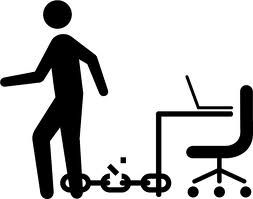 When I was an executive director, I always struggled with the question of how much time should a fundraising professional spend behind their desk? In fact, it drove me crazy. My personal opinion has always been that resource development is all about relationship building, and it is hard to build or grow a relationship from behind a desk. My assumption was that the less I saw the development director in the office, the more effective they were at growing relationships with donors and implementing the organization’s resource development program.
When I was an executive director, I always struggled with the question of how much time should a fundraising professional spend behind their desk? In fact, it drove me crazy. My personal opinion has always been that resource development is all about relationship building, and it is hard to build or grow a relationship from behind a desk. My assumption was that the less I saw the development director in the office, the more effective they were at growing relationships with donors and implementing the organization’s resource development program.
After many years of reflecting upon these beliefs, I now wonder how wrong I might have been.
Please don’t misunderstand me. I still believe with all my heart that resource development is all about relationships, but I now have questions such as:
- Should the executive director be more responsible for relationship building than the development director?
- Should the development director be more responsible for the “technical” stuff involved in implementing the annual resource development plan (e.g. writing, organizing, planning, etc)?
- If it is a “shared responsibility” (which is what I suspect many of you will conclude), then how much time behind the desk versus out of the office is the right balance for both the executive director and the development director?
- How do you measure relationship building and the success of such activities?
 If you are an executive director who likes to chain their fundraising professionals to a chair in the office, then you need to get over that instinct. You are most likely killing your resource development program unless your plan is highly focused on grant writing. I think Marc Pitman does a great job of speaking to this issue and provides a free weekly call report tool for your use in his blog post titled “Are fundraising professionals stupid?”
If you are an executive director who likes to chain their fundraising professionals to a chair in the office, then you need to get over that instinct. You are most likely killing your resource development program unless your plan is highly focused on grant writing. I think Marc Pitman does a great job of speaking to this issue and provides a free weekly call report tool for your use in his blog post titled “Are fundraising professionals stupid?”
My best suggestion for both executive directors and fundraising professionals is to read Marc’s blog post, download his weekly call report template, and start using them. I might even go as far as suggesting that copies of these reports get attached to the executive director’s monthly report that gets turned in to the board of directors (possibly included in the board packet).
You’ve probably heard the old expression:
What gets measured gets done.
I believe that Marc’s weekly call reports speak to this point. If you want to motivate yourself and your resource development staff to get out of the office, then start measuring it.
I posed a number of different questions in this blog post and haven’t even come close to providing as many answers. I thought I’d ask the readers of this blog to first weigh-in with what you think the answers are. Please scroll down and use the comment box to share your opinions or how your organization addresses such questions. There are no wrong answers. In the next few days, I will spin-off a few more posts on related subjects.
Here’s to your health!
Erik Anderson
Founder & President, The Healthy Non-Profit LLC
www.thehealthynonprofit.com
erik@thehealthynonprofit.com
http://twitter.com/#!/eanderson847
http://www.facebook.com/eanderson847
http://www.linkedin.com/in/erikanderson847



